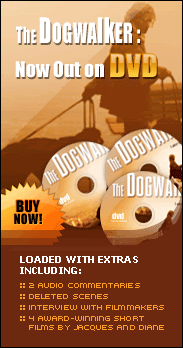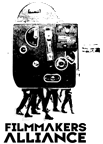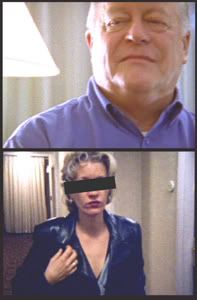People often ask what constitutes a Filmmakers Alliance (FA) film. The short answer is any film that is made by an FA member is an FA film. But clearly, people have seen a preference at work when we make selections for events like VisionFest or a public screening at Echo Park Film Center. So, to clarify our preferences and priorities, here's the 5 key elements the film must demonstrate for it to be considered an ideal FA film:
1. FA Film Status
Literally, the film must have been made by an FA member while they were members of Filmmakers Alliance.
2. A Personal POV and/or an Original Voice
Is this a film that could have only been made by this filmmaker? Does this film reflect an aesthetic approach, ideas and/or a view of the world that are unique to this filmmaker? Does this film explore an issue or comment on the world or an aspect of life as the filmmaker sees it and experiences it?
Original voice is the sum of many unique literary, visual, aesthetic choices or interpretations the filmmaker utilizes to express their PERSONAL POV. Original voice can also be the bold interpretation or reinterpretation of what has come before. Does the filmmaker have a unique way of expressing her/his ideas through an innovative use of genre or tone? Does the film have a unique visual style, sound design, etc. that effectively underscore and communicate the thematic elements?
3. Respect for the Craft of Filmmaking
Does this film demonstrate a level of accomplishment in the craft of filmmaking and some level of mastery of film language in the areas of production design, lighting, camera, continuity, sound design, acting, pacing, editing, signifiers, metaphor, dialogue, tonal consistency, etc.?
4. Appreciation for the Art of Filmmaking
Does the film work on many levels – visual, aural, spiritual, intellectual and/or as entertainment? Does the filmmaker appear to have an awareness and understanding of what has come before as far as the history and language of cinema?
5. Respect for the Collaborative Energy of Filmmaking
Was the pre-production, production, and post-production process positive and inclusive? Does the filmmaker graciously acknowledge and honor the contributions of others?
Now, I recognize that all of this sounds like we are only interested in SERIOUS ART. Yes, we are indeed very much interested in creatively ambitious cinema, but even broad comedies and genre films can be made according to these guidelines. In fact they SHOULD be made according to these guidelines if you want to do something singular and therefore memorable. If you are going to lay your heart, soul and ego on the line (not to mention your bank account) to make films, why not aspire to to the highest level of your own creative potential. A failed "Annie Hall" will always be 10 times more interesting and compelling than a thousand successful "American Pie"s. And, there may be a thousand of them before the studios are done. It's FA's goal to provide some small counterbalance to that sad fact....
Tuesday, April 29, 2008
Friday, April 25, 2008
OUR FILMMAKER'S AND WRITER'S RETREAT
My former wife, Diane Gaidry, conceived of the project "Red, White and Blue" - an homage to Krystof Kieslowski's decalogue that put together 10 FA filmmakers who each would create a tangentially-connected short elliptically addressing one of the American Bill of Rights. Brilliant, timely idea for which, sadly, we still have yet to find the financing. I am one of the filmmakers, and in developing the project, Diane conceived of a creative retreat, where the participating filmmakers would work on their individual projects, share ideas, watch/discuss films and bond socially in a quiet, but intensely focused setting. We did a few of them and they were all terrifically productive and inspiring. Fun, too.
So, even though "Red White and Blue" has stalled, there are still plenty of other projects that we all have in various stages of development/completion. So, we decided to continue the retreats. But they would be built along the idea that each of us woudl be doing our "own thing" without any connection to the others - our own projects in our own way. But all else would be the same - a beautiful, serene, fairly remote location. A big house that would fit us all. Community meals and a strict creative schedule - but with some time for play. Of course, all of the participating filmmakers would chip in for the cost of it - roughly $220 per person for a three-night retreat with everything (lodging, food, booze, firewood, toilet paper, etc.) included.
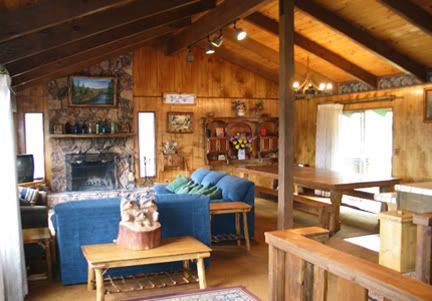
OUR LOVELY CABIN WITH A TABLE BIG ENOUGH TO FIT ALL OF OUR EGOS AND DRAMAS
So, we did one just this past week-end. And I can't help but take the time to talk about what a great experience it is and sort of break down why this sort of thing is so nourishing for certain kinds of filmmakers - or any creative beings. I say certain kinds because there are many creative-types who do not thrive in a group environment. They rail against it. The do not need nor want community involvement in the creative process and feel such energy is a threat to their own methodology. I can understand that. The creative process should invite risks and failures. It can also dig deep into highly vulnerable personal spaces. It can excite the sensitivity of our egos in ways we never expected. It's easy to see how laying this all out - sometimes prematurely - in a group dynamic can be very unpleasant.
But personally, I thrive on it. Even in the very earliest stages of a project. Part of it is bravery (my own little self-congratulatory opinion) and part of it is insecurity. I am indeed fearless about laying it all out there and letting people see the blemishes and turds that are part of the creative process. But that fearlessness comes in part, from a sense that I don't have what it takes to do it alone. And when I say I don't have it, I don't mean talent and ideas - although I'm happy to suck those out of anyone who'll let me. I'm talking about objectivity. Sometimes, I get so bonded with my own creations or I am so obsessed with a particular image or thematic that it's almost impossible for me to let it go...to see that it is simply not working.
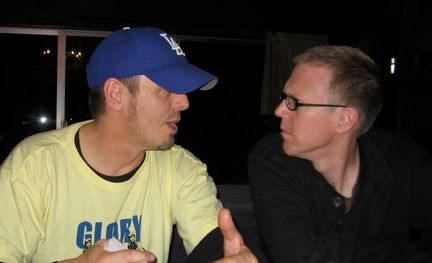
CAIN DEVORE LETS SEAN HOOD KNOW PRECISELY WHY HE THINKS HIS SCRIPT IS BETTER THAN SEAN'S
I also like how communal reactions and ideas stimulate my own. I've been given some ideas that are admittedly horrible ideas (even by the person giving them) that have spurred all kinds of great new things for me. I have had the entire room tell me how bad an idea is in a way that confirmed for me just the opposite - how good the idea is. Because they are reacting exactly how I need them to react so that I know that the film is on the right path of the journey I am taking them on.
And, finally, it is always inspiring and stimulating to learn from others' work and from my own reactions to it. Reading and reacting to other work always challenges or clarifies things for me in my own work or in regard to general filmmaking aesthetics. Why did you make this or that choice with the character? How are you choosing to explicate this or that theme? Why was I not compelled by this script 30 pages into it, yet when I finished it, felt completely satisfied - even deeply moved? Asking these kind of questions of myself and the filmmaker almost always leads me to a greater understanding of what makes a film work.
So, here's how it went - just in case you want to create your own. Pretty simple:
- Gather up eight to twelve talented, articulate, creatively ambitious filmmakers who have the time and money to do this, but who also have a project they are actively working on and, on which, they need support. This is the toughest part by far, obviously, for most of you. But thankfully, not for us in our little FA family.
- A week-end usually works best, depending on people's lives and jobs, but it typically needs to be two full days and two half days. Meaning, participants come in Friday afternoon and leave Monday morning. If necessary for their jobs, people can come in late Friday and leave late Sunday night. Can feel a bit rushed, but it works.
- Find a place in a beautiful, serene setting that is big enough to house all of you comfortably. We went to Big Bear this time, but in the past, had also gone to the Central Coast Wine Country and other places. We found the cabins and made the reservations online. Remember, unless you all have big bucks, you may need to share rooms. Ours had 5 bedrooms with twin and bunk beds. Worked out nice. You also need a good-sized living room to meet and discuss.
- We invited people to submit whatever they were working on which could include short and feature-length scripts, partial feature length scripts, treatments, proposals and film rough cuts. It really can be anything that needs work and can benefit from a communal feedback process.
- All of the projects need to be reviewed by all of the participants prior to the retreat. That means participants need to submit copies of their projects to all of the other participants no later than one week prior to the retreat. They must be ready to give their feedback on each project in a clear, constructive way.
- Someone will have to pay for the cabin pretty far in advance to secure it, but make sure you collect from the participants at least 2 weeks in advance and let them know there are no refunds otherwise whoever paid initially will be stuck with the extra cost. Also, if they want to replace themselves, they have to do it with your approval. The dynamic of the participants is crucial.
- Not all of the participants will pay the same. You can create a bit of resentment that way since some of the rooms will be shared, some won't. For unshared rooms and/or master bedrooms, you will charge a bit more per person. I let people pick their rooms on a first-come/first-serve basis. But nothing is 100% confirmed until they pay for it.
- Also, bundled into the single price of the week-end are all food, booze and supply costs as well as cleaning fees or any other charges. Refundable deposits should be handled by you alone and will come back to you alone. All costs in addition to the lodgings cost came to about $35-$40 per person for the whole retreat (that's for us at Big Bear outside of L.A. and shopping mostly at Trader Joe's). So again, total costs were about $220 a person - some more, some slightly less.
- Find people who will volunteer to cook. If you want good food, people have to be passionate about making it. Luckily, I like to cook, but I was with several others who also like to cook and cook well, so I wasn't the only one doing it. In fact, I did very little of the cooking, actually.
- Get food preferences/restrictions. Then, along with those who've agreed to cook, develop a menu for the week-end based on two big meals (breakfast and dinner) and a light lunch. You also need plenty of snack materials and some dessert. Don't forget the beverages - alcoholic and non-alcoholic. And LOTS of water. Also, condiments and seasonings, toilet paper, firewood (if there's a fireplace), etc., etc.
- Shop in the morning before the retreat, if possible. A day before, if not.
- Simple house rule: Those who don't cook, clean. And all clean together on the last day before loading out.
- Develop an agenda for the week-end. And stick to it as much as humanly possible. What worked for us was the following:
Friday Night
Prior to 6:00 p.m. - Settling in/Writing/Cooking
6:00 p.m. to 8:00 p.m. - Dinner and clean-up
8:00 p.m. to 10:00 p.m. - Each filmmaker introduces their project and gives some background/insight into it. They also discuss their goals for the retreat and why they chose to participate.
10:00 to bedtime - Hang out, writing, party, whatever...
Saturday and Sunday
Wake-up until 10:00 a.m. - Private time/Writing/Breakfast
10:00 a.m. until 1:00 p.m. - Feedback meetings for 1/4 of the projects
1:00 p.m. until 2:00 p.m. - Break-time/Lunch
2:00 p.m. until 5:00 p.m. - Feedback meetings for 1/4 of the projects
5:00 p.m. until 8:00 p.m. - Rest/Writing/Cooking
8:00 p.m. until 10:00 p.m. - Dinner and clean-up
10:00 p.m. until bedtime - Writing, movie watching, chatting, games, night hike, hot-tubbing, partying, whatever....
Monday
Wake-up until 9:00 a.m. - Private time/Writing/Breakfast
9:00 a.m. until 11:00 a.m. - Group clean-up and check-out

DRUNKEN POST WRITING AGENDA SCRAWLED OUT AT 4 A.M. (names were distorted to protect the guilty)
- Always remember the rules of good feedback: Be clear and specific. Be positive before negative. Be constructive and not merely judgmental. Offer solutions and not merely point out problems. Be respectful and sensitive to the goals of the filmmaker. Be brutally honest (again, but respectfully so). Do not interrupt other people's feedback. And, if you do, (because it happens when people are speaking passionately and ideas are flowing) make sure apologize/acknowledge and return to them when you are finished.
- Take copious notes. And/OR use an audio recorder. One of our participants had one built into his computer and created audio files for each project's feedback and then those files were given to the filmmaker. It was great.
And that, pretty much is that. Sounds simple, but it is amazing what goes on in those feedback sessions and in the subsequent discussions it creates throughout the retreat. And, with the right people of course, it is fun as hell....worth exponentially more than the price of admission. And the inspiration and ideas that emerged, at least for this filmmaker were (and are)...priceless.
So, even though "Red White and Blue" has stalled, there are still plenty of other projects that we all have in various stages of development/completion. So, we decided to continue the retreats. But they would be built along the idea that each of us woudl be doing our "own thing" without any connection to the others - our own projects in our own way. But all else would be the same - a beautiful, serene, fairly remote location. A big house that would fit us all. Community meals and a strict creative schedule - but with some time for play. Of course, all of the participating filmmakers would chip in for the cost of it - roughly $220 per person for a three-night retreat with everything (lodging, food, booze, firewood, toilet paper, etc.) included.

OUR LOVELY CABIN WITH A TABLE BIG ENOUGH TO FIT ALL OF OUR EGOS AND DRAMAS
So, we did one just this past week-end. And I can't help but take the time to talk about what a great experience it is and sort of break down why this sort of thing is so nourishing for certain kinds of filmmakers - or any creative beings. I say certain kinds because there are many creative-types who do not thrive in a group environment. They rail against it. The do not need nor want community involvement in the creative process and feel such energy is a threat to their own methodology. I can understand that. The creative process should invite risks and failures. It can also dig deep into highly vulnerable personal spaces. It can excite the sensitivity of our egos in ways we never expected. It's easy to see how laying this all out - sometimes prematurely - in a group dynamic can be very unpleasant.
But personally, I thrive on it. Even in the very earliest stages of a project. Part of it is bravery (my own little self-congratulatory opinion) and part of it is insecurity. I am indeed fearless about laying it all out there and letting people see the blemishes and turds that are part of the creative process. But that fearlessness comes in part, from a sense that I don't have what it takes to do it alone. And when I say I don't have it, I don't mean talent and ideas - although I'm happy to suck those out of anyone who'll let me. I'm talking about objectivity. Sometimes, I get so bonded with my own creations or I am so obsessed with a particular image or thematic that it's almost impossible for me to let it go...to see that it is simply not working.

CAIN DEVORE LETS SEAN HOOD KNOW PRECISELY WHY HE THINKS HIS SCRIPT IS BETTER THAN SEAN'S
I also like how communal reactions and ideas stimulate my own. I've been given some ideas that are admittedly horrible ideas (even by the person giving them) that have spurred all kinds of great new things for me. I have had the entire room tell me how bad an idea is in a way that confirmed for me just the opposite - how good the idea is. Because they are reacting exactly how I need them to react so that I know that the film is on the right path of the journey I am taking them on.
And, finally, it is always inspiring and stimulating to learn from others' work and from my own reactions to it. Reading and reacting to other work always challenges or clarifies things for me in my own work or in regard to general filmmaking aesthetics. Why did you make this or that choice with the character? How are you choosing to explicate this or that theme? Why was I not compelled by this script 30 pages into it, yet when I finished it, felt completely satisfied - even deeply moved? Asking these kind of questions of myself and the filmmaker almost always leads me to a greater understanding of what makes a film work.
So, here's how it went - just in case you want to create your own. Pretty simple:
- Gather up eight to twelve talented, articulate, creatively ambitious filmmakers who have the time and money to do this, but who also have a project they are actively working on and, on which, they need support. This is the toughest part by far, obviously, for most of you. But thankfully, not for us in our little FA family.
- A week-end usually works best, depending on people's lives and jobs, but it typically needs to be two full days and two half days. Meaning, participants come in Friday afternoon and leave Monday morning. If necessary for their jobs, people can come in late Friday and leave late Sunday night. Can feel a bit rushed, but it works.
- Find a place in a beautiful, serene setting that is big enough to house all of you comfortably. We went to Big Bear this time, but in the past, had also gone to the Central Coast Wine Country and other places. We found the cabins and made the reservations online. Remember, unless you all have big bucks, you may need to share rooms. Ours had 5 bedrooms with twin and bunk beds. Worked out nice. You also need a good-sized living room to meet and discuss.
- We invited people to submit whatever they were working on which could include short and feature-length scripts, partial feature length scripts, treatments, proposals and film rough cuts. It really can be anything that needs work and can benefit from a communal feedback process.
- All of the projects need to be reviewed by all of the participants prior to the retreat. That means participants need to submit copies of their projects to all of the other participants no later than one week prior to the retreat. They must be ready to give their feedback on each project in a clear, constructive way.
- Someone will have to pay for the cabin pretty far in advance to secure it, but make sure you collect from the participants at least 2 weeks in advance and let them know there are no refunds otherwise whoever paid initially will be stuck with the extra cost. Also, if they want to replace themselves, they have to do it with your approval. The dynamic of the participants is crucial.
- Not all of the participants will pay the same. You can create a bit of resentment that way since some of the rooms will be shared, some won't. For unshared rooms and/or master bedrooms, you will charge a bit more per person. I let people pick their rooms on a first-come/first-serve basis. But nothing is 100% confirmed until they pay for it.
- Also, bundled into the single price of the week-end are all food, booze and supply costs as well as cleaning fees or any other charges. Refundable deposits should be handled by you alone and will come back to you alone. All costs in addition to the lodgings cost came to about $35-$40 per person for the whole retreat (that's for us at Big Bear outside of L.A. and shopping mostly at Trader Joe's). So again, total costs were about $220 a person - some more, some slightly less.
- Find people who will volunteer to cook. If you want good food, people have to be passionate about making it. Luckily, I like to cook, but I was with several others who also like to cook and cook well, so I wasn't the only one doing it. In fact, I did very little of the cooking, actually.
- Get food preferences/restrictions. Then, along with those who've agreed to cook, develop a menu for the week-end based on two big meals (breakfast and dinner) and a light lunch. You also need plenty of snack materials and some dessert. Don't forget the beverages - alcoholic and non-alcoholic. And LOTS of water. Also, condiments and seasonings, toilet paper, firewood (if there's a fireplace), etc., etc.
- Shop in the morning before the retreat, if possible. A day before, if not.
- Simple house rule: Those who don't cook, clean. And all clean together on the last day before loading out.
- Develop an agenda for the week-end. And stick to it as much as humanly possible. What worked for us was the following:
Friday Night
Prior to 6:00 p.m. - Settling in/Writing/Cooking
6:00 p.m. to 8:00 p.m. - Dinner and clean-up
8:00 p.m. to 10:00 p.m. - Each filmmaker introduces their project and gives some background/insight into it. They also discuss their goals for the retreat and why they chose to participate.
10:00 to bedtime - Hang out, writing, party, whatever...
Saturday and Sunday
Wake-up until 10:00 a.m. - Private time/Writing/Breakfast
10:00 a.m. until 1:00 p.m. - Feedback meetings for 1/4 of the projects
1:00 p.m. until 2:00 p.m. - Break-time/Lunch
2:00 p.m. until 5:00 p.m. - Feedback meetings for 1/4 of the projects
5:00 p.m. until 8:00 p.m. - Rest/Writing/Cooking
8:00 p.m. until 10:00 p.m. - Dinner and clean-up
10:00 p.m. until bedtime - Writing, movie watching, chatting, games, night hike, hot-tubbing, partying, whatever....
Monday
Wake-up until 9:00 a.m. - Private time/Writing/Breakfast
9:00 a.m. until 11:00 a.m. - Group clean-up and check-out

DRUNKEN POST WRITING AGENDA SCRAWLED OUT AT 4 A.M. (names were distorted to protect the guilty)
- Always remember the rules of good feedback: Be clear and specific. Be positive before negative. Be constructive and not merely judgmental. Offer solutions and not merely point out problems. Be respectful and sensitive to the goals of the filmmaker. Be brutally honest (again, but respectfully so). Do not interrupt other people's feedback. And, if you do, (because it happens when people are speaking passionately and ideas are flowing) make sure apologize/acknowledge and return to them when you are finished.
- Take copious notes. And/OR use an audio recorder. One of our participants had one built into his computer and created audio files for each project's feedback and then those files were given to the filmmaker. It was great.
And that, pretty much is that. Sounds simple, but it is amazing what goes on in those feedback sessions and in the subsequent discussions it creates throughout the retreat. And, with the right people of course, it is fun as hell....worth exponentially more than the price of admission. And the inspiration and ideas that emerged, at least for this filmmaker were (and are)...priceless.
Thursday, April 24, 2008
NAB 2008
So, Amanda and I trotted off the the annual geek-gathering in Vegas called the NAB (National Association of Broadcasters) Show, which has become (or always was) a media technology convention showing off the latest in media creation and delivery technology.
Some pretty cool stuff that is out there now or about to come down the runway. But why were these independent filmmakers there? Well, for a few reasons. Mostly, because Filmmakers Alliance has a handful of key, meaningful sponsors and they are all there at NAB. So, we need to check in with them. We are also launching our Global Initiative (turning FA into a global org via the web instead of the strictly L.A.-based org that it is now) and need the support of even more sponsors.
Secondly, most filmmakers are also geeks or have a geek inside them that wants to see all the cool stuff out there - and learn a little bit about how to use it. It's also useful to know, as an artist, what kind of colors I can add to my palette and what kind of brushes/new brushstrokes can I add to my work. And, also, what are the new ways I can bring my work to audiences. Truly, this stuff is very meaningful on a creative level....if a bit dry and boring sometimes.

AMANDA LOOKING THOROUGHLY OVERWHELMED ON THE EXHIBITS FLOOR (lots of men and too many "fart pockets")
Lastly, there is a filmmaking community tucked in with all the anxious businessmen and zealous geekosaureses. They flock here for the reasons mentioned above and we love connecting with them. A number of our FA cronies also show up, so it feels like a nice party and another opportunity to extend our filmmaking community.
Oh, and lets not forget it's in Vegas. Which, of course, pushes my buttons in terms of my love-hate with Vegas. Hate because I just think so much of it, and so much of who goes there, is flat-out disgusting. Some of the worse, most fucked-up human impulses find unbridled expression in Vegas. And the Vegas big-shots know it and thrive on it. "Sin City", "What happens in Vegas, stays in Vegas", etc. But despite that, I love it because I almost always have a blast. Granted, I know the tricks to keeping it fun. No more than twice a year (if that). No more than a couple of days at a time. Never gamble more than I can afford to lose. Never go to Vegas clubs (unless it is privately rented specifically for an event I have been invited to). Always mingle in non-Casino stuff like shows, bowling, hikes, dinners, etc.
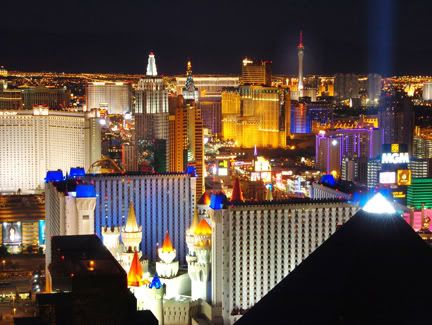
CineVegas is an exception to these rules and is such a great festival because it has organized all of the Las Vegas vices into controlled activity built around a film festival. It's all of the fun without the sleaze and guilt. Well, maybe some sleaze. But just enough so that it easily washes off. And lots of good films. I highly recommend it.
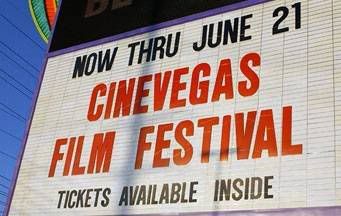
Anyway, back to NAB. Two highlights: meeting up with one of our main sponsors - CANON USA and hanging out in the RED camera show booth.
We checked in with our CANON USA family. Tim Smith is now our main connect there (it had been the wonderful Mike Zorich for years). But there is also Greg Salmon and Cindy Baer (who is married to the brilliant D.P. Matthew Iriving - whom she often drags to the show) and many, many more. And we love Tim Smith. For what is essentially a corporate sales guy, he seems nothing like a corporate sales guy. He really understands filmmaking and filmmakers - understands and cares about them. Sometimes, listening to him talk, I feel like urging him to toss in the suit and tie and jump behind that camera. But I'm selfishly happy he's where he is because his and CANON's support for us means a lot.
Anyway, they've donated some HDV cameras to us for our members and to rent out cheaply to others, but are always checking to see if our needs are being met. They seem to be always looking to improve and address the demands of filmmakers. So, Tim arranged a meeting between us and CANON's Japanese engineers. They peppered us with creative and technical questions to get some idea of what filmmakers need and want. Apparently, they've had many meetings like this and seem to be really listening. We'll see what it births. It was fun, though, to get a small window into Japanese corporate culture and the strange, but endearing formality of it all. Well, it's endearing when you are only brushing up against it. Curious how Tim feels about it, being exposed to it on a regular basis.
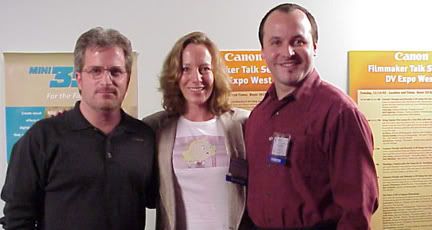
CANON'S TIM SMITH, FILMMAKER DAWN WESTLAKE AND...SOME OTHER DUDE
Next, we spent time in the RED camera show booth. It was crowded and definitely attracted the more "hip" geekosaureses. Our friend Michael Cioni and his Plaster City Post crew were there en masse. Michael has quickly become a RED camera authority and has worked out some elegant post work-flow solutions for the camera. So, he was hosting demonstrations and answering questions on behalf of RED. We stopped in to say "hi" and he gave us a private tour. And I gotta say, any camera manufacturer searching for a way to address filmmaker's needs just has to look no further than this camera and tell themselves - I have to do this or better. We've used the camera on a few projects so far, and it is just awesome - for any price, let alone the relatively cheap one that it is now. And what they've got coming is only better, including a 5k camera, a small 3k camera and, essentially, a 2k drive/deck for tapeless projection for under $1000 dollars. Good stuff.

THE RED CAMERA EXHIBIT BOOTH
But while hanging out there, a guy came up and chatted with us very casually. I asked him if he was a "RED guy" and he kinda laughed and we continued talking about FA and the implementation of the RED camera in various kinds of projects. I asked who does marketing, as they would be good sponsors for us. He laughed again. Finally, I asked for his card. Turned out he was Jim Jannard, the founder of the RED camera and former founder-CEO of the Oakley eyewear and apparel company. I was immediately struck by his manner. He was easily the most down-to-earth and easy-going billionaire I ever chatted with. And I'm not just saying that because he is the only billionaire I ever chatted with. He also flirted a bit with Amanda, who had the good sense to ignore her hastily made and arbitrary rule of never flirting with billionaires. Amanda is a good gauge of character. If they respond to Amanda, they're usually good peeps. Most impressively, he seemed to really care about his camera and its impact on filmmakers. I should send him a follow-up email. Ya think?
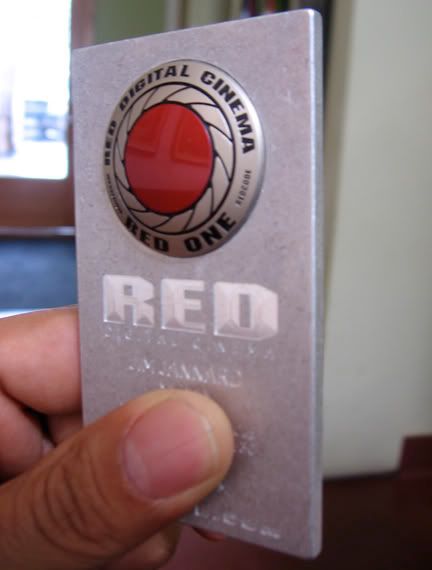
JIM JANNARD'S BIZ CARD - A HEFTY, THREE-DIMENSIONAL WORK OF ART
Oh, two more highlights to add, actually. Winning $50 at craps playing on a table I had all to myself and bowling a 160 average when I was drunk off of my ass. Ah, the filmmaker's life....
Some pretty cool stuff that is out there now or about to come down the runway. But why were these independent filmmakers there? Well, for a few reasons. Mostly, because Filmmakers Alliance has a handful of key, meaningful sponsors and they are all there at NAB. So, we need to check in with them. We are also launching our Global Initiative (turning FA into a global org via the web instead of the strictly L.A.-based org that it is now) and need the support of even more sponsors.
Secondly, most filmmakers are also geeks or have a geek inside them that wants to see all the cool stuff out there - and learn a little bit about how to use it. It's also useful to know, as an artist, what kind of colors I can add to my palette and what kind of brushes/new brushstrokes can I add to my work. And, also, what are the new ways I can bring my work to audiences. Truly, this stuff is very meaningful on a creative level....if a bit dry and boring sometimes.

AMANDA LOOKING THOROUGHLY OVERWHELMED ON THE EXHIBITS FLOOR (lots of men and too many "fart pockets")
Lastly, there is a filmmaking community tucked in with all the anxious businessmen and zealous geekosaureses. They flock here for the reasons mentioned above and we love connecting with them. A number of our FA cronies also show up, so it feels like a nice party and another opportunity to extend our filmmaking community.
Oh, and lets not forget it's in Vegas. Which, of course, pushes my buttons in terms of my love-hate with Vegas. Hate because I just think so much of it, and so much of who goes there, is flat-out disgusting. Some of the worse, most fucked-up human impulses find unbridled expression in Vegas. And the Vegas big-shots know it and thrive on it. "Sin City", "What happens in Vegas, stays in Vegas", etc. But despite that, I love it because I almost always have a blast. Granted, I know the tricks to keeping it fun. No more than twice a year (if that). No more than a couple of days at a time. Never gamble more than I can afford to lose. Never go to Vegas clubs (unless it is privately rented specifically for an event I have been invited to). Always mingle in non-Casino stuff like shows, bowling, hikes, dinners, etc.

CineVegas is an exception to these rules and is such a great festival because it has organized all of the Las Vegas vices into controlled activity built around a film festival. It's all of the fun without the sleaze and guilt. Well, maybe some sleaze. But just enough so that it easily washes off. And lots of good films. I highly recommend it.

Anyway, back to NAB. Two highlights: meeting up with one of our main sponsors - CANON USA and hanging out in the RED camera show booth.
We checked in with our CANON USA family. Tim Smith is now our main connect there (it had been the wonderful Mike Zorich for years). But there is also Greg Salmon and Cindy Baer (who is married to the brilliant D.P. Matthew Iriving - whom she often drags to the show) and many, many more. And we love Tim Smith. For what is essentially a corporate sales guy, he seems nothing like a corporate sales guy. He really understands filmmaking and filmmakers - understands and cares about them. Sometimes, listening to him talk, I feel like urging him to toss in the suit and tie and jump behind that camera. But I'm selfishly happy he's where he is because his and CANON's support for us means a lot.
Anyway, they've donated some HDV cameras to us for our members and to rent out cheaply to others, but are always checking to see if our needs are being met. They seem to be always looking to improve and address the demands of filmmakers. So, Tim arranged a meeting between us and CANON's Japanese engineers. They peppered us with creative and technical questions to get some idea of what filmmakers need and want. Apparently, they've had many meetings like this and seem to be really listening. We'll see what it births. It was fun, though, to get a small window into Japanese corporate culture and the strange, but endearing formality of it all. Well, it's endearing when you are only brushing up against it. Curious how Tim feels about it, being exposed to it on a regular basis.

CANON'S TIM SMITH, FILMMAKER DAWN WESTLAKE AND...SOME OTHER DUDE
Next, we spent time in the RED camera show booth. It was crowded and definitely attracted the more "hip" geekosaureses. Our friend Michael Cioni and his Plaster City Post crew were there en masse. Michael has quickly become a RED camera authority and has worked out some elegant post work-flow solutions for the camera. So, he was hosting demonstrations and answering questions on behalf of RED. We stopped in to say "hi" and he gave us a private tour. And I gotta say, any camera manufacturer searching for a way to address filmmaker's needs just has to look no further than this camera and tell themselves - I have to do this or better. We've used the camera on a few projects so far, and it is just awesome - for any price, let alone the relatively cheap one that it is now. And what they've got coming is only better, including a 5k camera, a small 3k camera and, essentially, a 2k drive/deck for tapeless projection for under $1000 dollars. Good stuff.

THE RED CAMERA EXHIBIT BOOTH
But while hanging out there, a guy came up and chatted with us very casually. I asked him if he was a "RED guy" and he kinda laughed and we continued talking about FA and the implementation of the RED camera in various kinds of projects. I asked who does marketing, as they would be good sponsors for us. He laughed again. Finally, I asked for his card. Turned out he was Jim Jannard, the founder of the RED camera and former founder-CEO of the Oakley eyewear and apparel company. I was immediately struck by his manner. He was easily the most down-to-earth and easy-going billionaire I ever chatted with. And I'm not just saying that because he is the only billionaire I ever chatted with. He also flirted a bit with Amanda, who had the good sense to ignore her hastily made and arbitrary rule of never flirting with billionaires. Amanda is a good gauge of character. If they respond to Amanda, they're usually good peeps. Most impressively, he seemed to really care about his camera and its impact on filmmakers. I should send him a follow-up email. Ya think?

JIM JANNARD'S BIZ CARD - A HEFTY, THREE-DIMENSIONAL WORK OF ART
Oh, two more highlights to add, actually. Winning $50 at craps playing on a table I had all to myself and bowling a 160 average when I was drunk off of my ass. Ah, the filmmaker's life....
Tuesday, April 22, 2008
AFI Dallas 2008
One of the perks of being around so long is that you attain a certain level of status by attrition (the survivor, the fixture, the dude that just won't give up and go away) and therefore you get invited to a lot of events as a juror, panelist, correspondent, industry expert, etc. And you eat it up for all the free booze, movies and meals it is worth.
You also get to meet a lot of people. And two of the lovelier people I have met over the years are Filmmaker-Producer-Festival Head Michael Cain and his beautiful wife Melina. Michael was tabbed as the CEO/Artistic Director of the new AFI Dallas when it launched two years ago after doing the Deep Ellum Film Festival for many years. And Melina provides the perfect compliment/partner - both in spirit and in roll-up-yer-sleeves work.
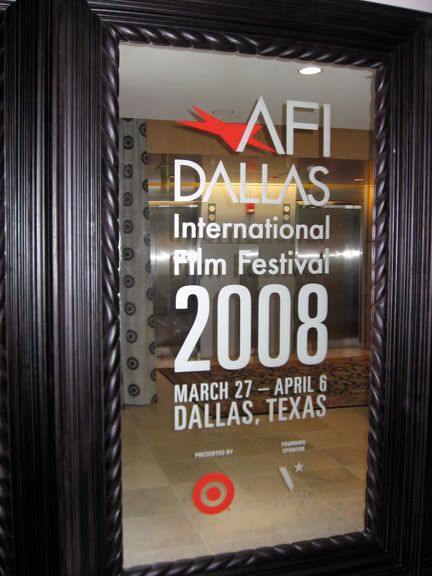
Anyway, they graciously invited me to the fest this year as a short film juror (along with filmmaker Harry Kellerman). Of course, I immediately agreed. Especially since I'd never been to Dallas. My only regret is that the trip would conflict with my annual sojourn to Ashland, Oregon for the Ashland Independent Film Festival. It is, itself, a great festival and I am honored to be a part of its family. But I had other objectives to address in the trip to Dallas, including drumming up financial support for FA's Global Initiative (and 5 Minute Film School).
My expectations were high because I've been part of the AFI Fest in Los Angeles and I'm very impressed with the quality of that festival. Also, with Michael and Melina involved, I knew, at the very least, it would be an enjoyable experience. The actual experience, however, exceeded my expectations.
From the quality of programming by Sarah Harris and James Faust to the quality of the actual screening presentations to the quality of lodgings at the W Dallas to the gracious Lexus-driving chauffers to the tightly planned/run events to the the army of committed, supportive volunteers, every aspect of the festival was top-notch as well as warm and supportive. Of course, that all comes from the top down, and as I said, Michael and Melina are great peeps. The peeps who oversee all the AFI film fests as well as directly manage AFI Los Angeles - Christian Gaines, Shaz Bennett and Rose Kuo - all rock, as well.
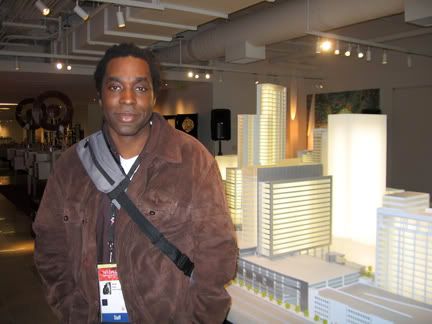
AFI DALLAS PROGRAMMER JAMES FAUST
Didn't get to see much of Dallas, beyond the official festival venues, but I did meet a few local filmmakers, Blair Rowan, Chris Gardner, Barak Epstein (makers of "Blood on the Highway"), their female lead Robin Gierhart and another local filmmaker Adam Donaghey. I pretty much hung with Blair, Chris and Adam throughout the fest and they were a drunken hoot - smart, fun and funny, but still responsible. Meaning, they were able to show up for work each morning after repeated nights of festival debauchery. They also had me laughing my ass off even when we weren't drinking. Bonding with these talented locals was definitely the highlight of the fest for me.
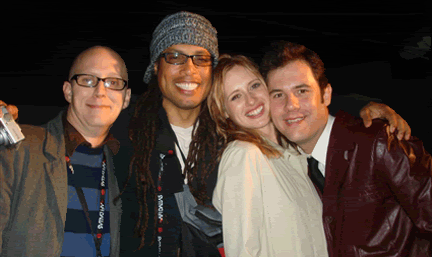
Blair Rowan, Me, Robin Gierhart and Chris Gardner
at "Blood On The Highway" after-party
So, of course, I had to see their film and I wasn't disappointed. It was all the hilarious mayhem that I'd hoped for - with raunchy dialogue so over-the-top as to be virtuosic. Hopefully, it will make it to AFI in Los Angeles and we can celebrate it with a raucous party. Check out the trailer for the movie HERE.
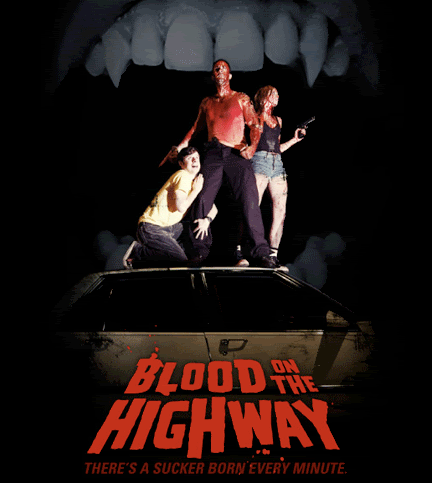
Finally, another of the best things about the fest was getting to watch 48 short films and discussing them with fellow juror Harry Kellerman. He's a smart, talented guy and a lot of fun so we were able to engage in some really thoughtful and inspiring conversations about the films....and not without a lot of humor. The programming was great, so the films almost always had some compelling elements to feed our discussions. In the end, the two that grabbed us the most both had, by sheer coincidence, a Dallas connection. Local filmmaker David Lowery's film "A Catalog of Anticipations" was an affecting, breathtaking fable to which we gave a Special Jury Prize. And we gave the Best Short Award to NY filmmaker, but Dallas native John Magary's "The Second Line" - a thoughtful, nuanced slice of post-Katrina that was a smart microcosm and metaphor for the kind of cultural and economic alienation that plagues too much of our otherwise robust country. It was truly a pleasure to meet, hang and discuss films with Harry and it all turned out to be among the best juror experiences I've ever had.

DALLAS IN MINIATURE AT THE TARGET FILMMAKER LOUNGE
I was impressed with the sophistication of the parts of Dallas I got to see. Saw a bit of old Seattle in the creative energy brewing there. Definitely great stuff going on so I look forward to heading back - if just to swap jokes with my new Blood On The Highway family. But I very much look forward to returning to the festival. Curious about how it will evolve and how much better it can get, because it is pretty damn good right now.
You also get to meet a lot of people. And two of the lovelier people I have met over the years are Filmmaker-Producer-Festival Head Michael Cain and his beautiful wife Melina. Michael was tabbed as the CEO/Artistic Director of the new AFI Dallas when it launched two years ago after doing the Deep Ellum Film Festival for many years. And Melina provides the perfect compliment/partner - both in spirit and in roll-up-yer-sleeves work.

Anyway, they graciously invited me to the fest this year as a short film juror (along with filmmaker Harry Kellerman). Of course, I immediately agreed. Especially since I'd never been to Dallas. My only regret is that the trip would conflict with my annual sojourn to Ashland, Oregon for the Ashland Independent Film Festival. It is, itself, a great festival and I am honored to be a part of its family. But I had other objectives to address in the trip to Dallas, including drumming up financial support for FA's Global Initiative (and 5 Minute Film School).
My expectations were high because I've been part of the AFI Fest in Los Angeles and I'm very impressed with the quality of that festival. Also, with Michael and Melina involved, I knew, at the very least, it would be an enjoyable experience. The actual experience, however, exceeded my expectations.
From the quality of programming by Sarah Harris and James Faust to the quality of the actual screening presentations to the quality of lodgings at the W Dallas to the gracious Lexus-driving chauffers to the tightly planned/run events to the the army of committed, supportive volunteers, every aspect of the festival was top-notch as well as warm and supportive. Of course, that all comes from the top down, and as I said, Michael and Melina are great peeps. The peeps who oversee all the AFI film fests as well as directly manage AFI Los Angeles - Christian Gaines, Shaz Bennett and Rose Kuo - all rock, as well.

AFI DALLAS PROGRAMMER JAMES FAUST
Didn't get to see much of Dallas, beyond the official festival venues, but I did meet a few local filmmakers, Blair Rowan, Chris Gardner, Barak Epstein (makers of "Blood on the Highway"), their female lead Robin Gierhart and another local filmmaker Adam Donaghey. I pretty much hung with Blair, Chris and Adam throughout the fest and they were a drunken hoot - smart, fun and funny, but still responsible. Meaning, they were able to show up for work each morning after repeated nights of festival debauchery. They also had me laughing my ass off even when we weren't drinking. Bonding with these talented locals was definitely the highlight of the fest for me.

Blair Rowan, Me, Robin Gierhart and Chris Gardner
at "Blood On The Highway" after-party
So, of course, I had to see their film and I wasn't disappointed. It was all the hilarious mayhem that I'd hoped for - with raunchy dialogue so over-the-top as to be virtuosic. Hopefully, it will make it to AFI in Los Angeles and we can celebrate it with a raucous party. Check out the trailer for the movie HERE.

Finally, another of the best things about the fest was getting to watch 48 short films and discussing them with fellow juror Harry Kellerman. He's a smart, talented guy and a lot of fun so we were able to engage in some really thoughtful and inspiring conversations about the films....and not without a lot of humor. The programming was great, so the films almost always had some compelling elements to feed our discussions. In the end, the two that grabbed us the most both had, by sheer coincidence, a Dallas connection. Local filmmaker David Lowery's film "A Catalog of Anticipations" was an affecting, breathtaking fable to which we gave a Special Jury Prize. And we gave the Best Short Award to NY filmmaker, but Dallas native John Magary's "The Second Line" - a thoughtful, nuanced slice of post-Katrina that was a smart microcosm and metaphor for the kind of cultural and economic alienation that plagues too much of our otherwise robust country. It was truly a pleasure to meet, hang and discuss films with Harry and it all turned out to be among the best juror experiences I've ever had.

DALLAS IN MINIATURE AT THE TARGET FILMMAKER LOUNGE
I was impressed with the sophistication of the parts of Dallas I got to see. Saw a bit of old Seattle in the creative energy brewing there. Definitely great stuff going on so I look forward to heading back - if just to swap jokes with my new Blood On The Highway family. But I very much look forward to returning to the festival. Curious about how it will evolve and how much better it can get, because it is pretty damn good right now.
More Distribution Support
Do you want distribution for your independent film?
Ever wonder why such bad movies get financed and distributed while talented filmmakers and projects get passed on again and again?
Would you like to know how to develop a distribution strategy, get your movie distributed to multiple outlets, and start making a living as a filmmaker?
If you're interested in making a movie that gets distribution, the good news is that help is on the way! FILM DISTRIBUTION KIT is a comprehensive educational program dedicated to film distribution and the marketplace. Created by Stacey Parks, a former foreign sales agent and author of The Insiders Guide to Independent Film Distribution (Focal Press), the FILM DISTRIBUTION KIT will show you how, with a few little-known distribution secrets, you can take control of your filmmaking career.
Not only will your work gain audience recognition worldwide, but you will be able to sell your films for a profit and make a real career out of filmmaking. Get yours here with the Filmmakers Alliance special discount: http://www.FilmSpecific.com/KitPromo
ALSO....
Join the hundreds of other members of Film Specific who are getting distribution for their films, programs, and other content...and making profits in the process.
Film Specific will give you access to actual Distributors and other independent film Experts, plus Buyers Lists and other resources aimed at connecting YOU with worldwide independent film distributors. Whether you are going after Traditional Distribution, Self-Distribution, or both - you'll get the ongoing support you need as we hold your hand through the entire process. Go ahead...put the odds in your favor!
Subscribe to Film Specific before Sunday, April 27th and get our special ONE YEAR BIRTHDAY bonuses! Just go here to see all we have to offer you: http://www.filmspecific.com/public/10.cfm

Ever wonder why such bad movies get financed and distributed while talented filmmakers and projects get passed on again and again?
Would you like to know how to develop a distribution strategy, get your movie distributed to multiple outlets, and start making a living as a filmmaker?
If you're interested in making a movie that gets distribution, the good news is that help is on the way! FILM DISTRIBUTION KIT is a comprehensive educational program dedicated to film distribution and the marketplace. Created by Stacey Parks, a former foreign sales agent and author of The Insiders Guide to Independent Film Distribution (Focal Press), the FILM DISTRIBUTION KIT will show you how, with a few little-known distribution secrets, you can take control of your filmmaking career.
Not only will your work gain audience recognition worldwide, but you will be able to sell your films for a profit and make a real career out of filmmaking. Get yours here with the Filmmakers Alliance special discount: http://www.FilmSpecific.com/KitPromo
ALSO....
Join the hundreds of other members of Film Specific who are getting distribution for their films, programs, and other content...and making profits in the process.
Film Specific will give you access to actual Distributors and other independent film Experts, plus Buyers Lists and other resources aimed at connecting YOU with worldwide independent film distributors. Whether you are going after Traditional Distribution, Self-Distribution, or both - you'll get the ongoing support you need as we hold your hand through the entire process. Go ahead...put the odds in your favor!
Subscribe to Film Specific before Sunday, April 27th and get our special ONE YEAR BIRTHDAY bonuses! Just go here to see all we have to offer you: http://www.filmspecific.com/public/10.cfm

Thursday, April 10, 2008
Breadwinning vs. Filmmaking - Resolving the battle with a short film
My friend and creative Collaborator Sean Hood got back behind the camera to film his short "Zacariah" (formerly "Sounds Through A Wall"). The short script was a winner of the Los Angeles Short Filmmaking Grant administered through us over at Filmmakers Alliance (FA) and became a sort of "family" project as it was produced by FA founding member Cain DeVore and FA Vice-Prez Amanda Sweikow.
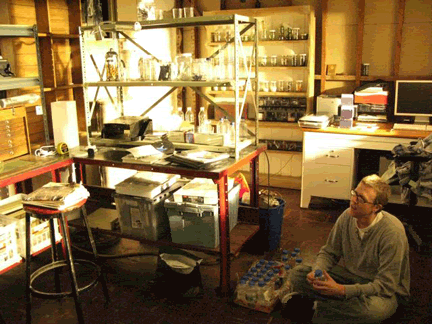
Sean Hood contemplates his film
Sean has been doing a lot of professional screenwriting (as in paid) over the past several years and that is what keeps him in silk suits and shiny cars. But he is an artist/filmmaker first and foremost, and the urge to make a film never stops burning within him. However, life and work priorities kept him away from actually making a film over the last 10 years other than a sketchbook he and I did together back in 2003.
I bring this up because it is easy to find yourself in this situation and it is one you must vigilantly guard against or challenge yourself to change. I myself have not shot a feature in 8 years (although I finished the film not too long ago) and have not made a short in almost 3 years. Unacceptable, even if understandable. I spent the first of the last three years touring with the short to numerous festivals, the second year distributing the feature and the last year recovering from personal crises and trying to stabilize my crazy life (and co-producing 3 films). So, on one level, I can forgive myself.
But, like Sean, the desire to make a film never stops burning within me. And making a film these days - especially a short film - is so accessible, there's really no excuse short of some catastrophic mental or physical disablement to stop us from doing what is most essential to our nature. And, in fact, ignoring that crucial part of ourselves does far more harm than good to our psyche - no matter how financially stable we are able to make ourselves during those long non-filmmaking periods.
Sean had finally reached a point where he was determined to make his film by any means necessary. In addition to the money and resources he got through the LASF Grant, he had planned all kinds of fundraisers and solicited support from all he knew. For a short film, there are all kinds of ways to raise money. And Sean was exploring them all when providence lent a hand and a nice financial windfall showed up unexpectedly, allowing him to throw the production into high gear. Keep in mind, there are many ways to raise money for a short film (fundraising events, garage sales, personal donations, corporate grants, just plain begging for it, etc.) and there are all kinds of films that can be made that don't demand many financial resources. In other words, there is nothing to stop you financially.
The next step for Sean was to surround himself with a support crew that would contribute to the film in a way that allowed him to focus on guiding its creative vision. And in Cain and Amanda (and many others) he did a great job. But this is due, in no small part, to the support and guidance he has historically given to our filmmaking community. He's been there for us, so we naturally wanted to be there for him.
The rest almost automatically falls into place. Sean shot his short on the fancy new RED camera, but it wouldn't have mattered if he was shooting on a 1990 Hi-8 Video camera. He was making a film. He was in his element. He was answering the call of his essential self and didn't let anything stand in his way this time.
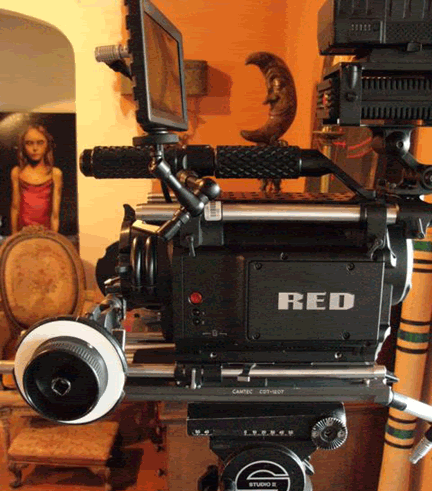
The mythical RED camera
In my case, what challenges me is not the means, it's the meaning. Sean had his script, which he'd been developing for awhile prior to winning the Grant. I, however, have been struggling to wrap my arms around a concept that works for me on all the levels on which I would want a film to work. In other words, it is not enough for me to devise a clever or even a moving story. It is not enough to create amazing visuals, sound design or some other dazzling filmic component. It isn't even enough for me to make a film that has something meaningful to convey. The film I make must work simultaneously on all of those levels and more. It should be compelling narratively, arresting artistically and rich thematically and metaphorically. In other words, the film should realize as much of the poetic and visceral potential of cinema as is possible.
Now, I know this is a tall order and, in some ways, just another barrier I create to stop myself from making a film. I simply need to get over it. All of us can only make the film we are capable of making at the moment. And it will lead us wherever it leads us. I have ideas. They may not organically work on all the levels my "dream project" might work on, but they will allow me to investigate enough creative issues to be worthwile. Watching Sean on set was inspiring and motivating. It was like he'd been making films every month for the last ten years. He was focused and assured. He was doing what he was meant to be doing. And it was NOT about the resultant film. It was about the process of doing...of learning...of growing...of creating.
Time for me to experience my own process.

Sean Hood contemplates his film
Sean has been doing a lot of professional screenwriting (as in paid) over the past several years and that is what keeps him in silk suits and shiny cars. But he is an artist/filmmaker first and foremost, and the urge to make a film never stops burning within him. However, life and work priorities kept him away from actually making a film over the last 10 years other than a sketchbook he and I did together back in 2003.
I bring this up because it is easy to find yourself in this situation and it is one you must vigilantly guard against or challenge yourself to change. I myself have not shot a feature in 8 years (although I finished the film not too long ago) and have not made a short in almost 3 years. Unacceptable, even if understandable. I spent the first of the last three years touring with the short to numerous festivals, the second year distributing the feature and the last year recovering from personal crises and trying to stabilize my crazy life (and co-producing 3 films). So, on one level, I can forgive myself.
But, like Sean, the desire to make a film never stops burning within me. And making a film these days - especially a short film - is so accessible, there's really no excuse short of some catastrophic mental or physical disablement to stop us from doing what is most essential to our nature. And, in fact, ignoring that crucial part of ourselves does far more harm than good to our psyche - no matter how financially stable we are able to make ourselves during those long non-filmmaking periods.
Sean had finally reached a point where he was determined to make his film by any means necessary. In addition to the money and resources he got through the LASF Grant, he had planned all kinds of fundraisers and solicited support from all he knew. For a short film, there are all kinds of ways to raise money. And Sean was exploring them all when providence lent a hand and a nice financial windfall showed up unexpectedly, allowing him to throw the production into high gear. Keep in mind, there are many ways to raise money for a short film (fundraising events, garage sales, personal donations, corporate grants, just plain begging for it, etc.) and there are all kinds of films that can be made that don't demand many financial resources. In other words, there is nothing to stop you financially.
The next step for Sean was to surround himself with a support crew that would contribute to the film in a way that allowed him to focus on guiding its creative vision. And in Cain and Amanda (and many others) he did a great job. But this is due, in no small part, to the support and guidance he has historically given to our filmmaking community. He's been there for us, so we naturally wanted to be there for him.
The rest almost automatically falls into place. Sean shot his short on the fancy new RED camera, but it wouldn't have mattered if he was shooting on a 1990 Hi-8 Video camera. He was making a film. He was in his element. He was answering the call of his essential self and didn't let anything stand in his way this time.

The mythical RED camera
In my case, what challenges me is not the means, it's the meaning. Sean had his script, which he'd been developing for awhile prior to winning the Grant. I, however, have been struggling to wrap my arms around a concept that works for me on all the levels on which I would want a film to work. In other words, it is not enough for me to devise a clever or even a moving story. It is not enough to create amazing visuals, sound design or some other dazzling filmic component. It isn't even enough for me to make a film that has something meaningful to convey. The film I make must work simultaneously on all of those levels and more. It should be compelling narratively, arresting artistically and rich thematically and metaphorically. In other words, the film should realize as much of the poetic and visceral potential of cinema as is possible.
Now, I know this is a tall order and, in some ways, just another barrier I create to stop myself from making a film. I simply need to get over it. All of us can only make the film we are capable of making at the moment. And it will lead us wherever it leads us. I have ideas. They may not organically work on all the levels my "dream project" might work on, but they will allow me to investigate enough creative issues to be worthwile. Watching Sean on set was inspiring and motivating. It was like he'd been making films every month for the last ten years. He was focused and assured. He was doing what he was meant to be doing. And it was NOT about the resultant film. It was about the process of doing...of learning...of growing...of creating.
Time for me to experience my own process.
Subscribe to:
Posts (Atom)

